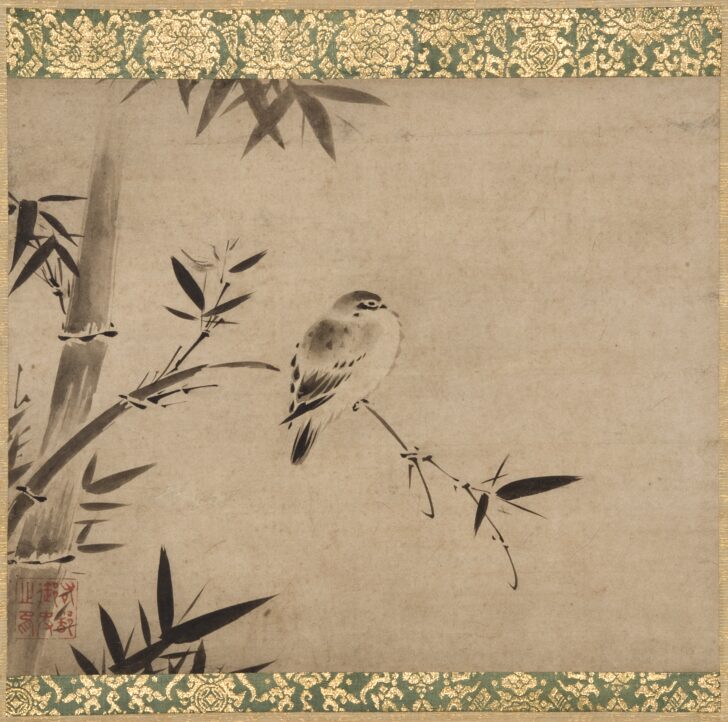Sparrow on a Bamboo Branch
Kanō Gyokuraku

Description
Kanô Gyokuraku
Japanese, active 1550–1590
Sparrow on a Bamboo Branch
Momoyama period (1583–1615)
2nd half of 16th century
Hanging scroll, ink on paper
Museum purchase made possible by the Margaret Watson Parker Art Collection
Fund, 1968/2.54
Imagine being in a small tea house in early spring, a faint fragrance of incense in the air. Outside, all is covered with snow. The host serves steaming green tea in a handcrafted black raku bowl, its thick walls ideally suited to retaining heat. In an alcove, you spy a painting of a plump sparrow, sitting in a sunny spot. The tea bowl and painting have been carefully orchestrated by your host to create a sense of the coming spring.
This painting by the Kanô-school painter Gyokuraku was made at the time that the great tea master Sen no Rikyû (1522–1591) was perfecting the tea practice based on the aesthetic of wabi, which valued rusticity or genteel frugality. According to Rikyû, the essence of wabi is contrast—only people who know the lavish colors of flowers and autumn leaves (analogous to gold and brocade) can appreciate the rustic beauty of a deserted fisherman’s house. The painting by Gyokuraku represents the wabi ideal: the quick, abbreviated ink drawing of the mundane bird is mounted on the opulent golden silk brocade.
Subject Matter:
The combination of a bird and bamboo here is a favored subject matter in Japanese ink painting called "bird and flower" painting ("kachôga"). Painters of Kanô school (official painting school of the samurai class in Momoyama and Edo periods) executed many paintings in this category.
Physical Description:
A plump sparrow is perching on a bamboo branch, which is bending from the main branch on the left side of the painting. The bamboo has young and mature leaves. The background is left as blank. The mounting is made of creamy silk brocade with blue green silk brocade strips. Brown brocade pieces are pasted on the top and the bottom of the mounting. There is a seal in red ink on the left corner. Wrinkles on the top and right lower side of the bid; some smaller worm holes and one large hole underneath the bird, but all repaired.
Usage Rights:
If you are interested in using an image for a publication, please visit https://umma.umich.edu/request-image/ for more information and to fill out the online Image Rights and Reproductions Request Form.